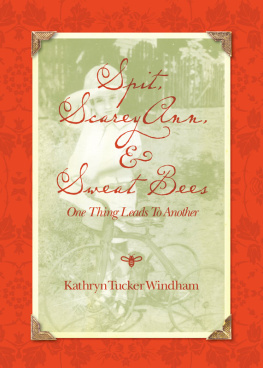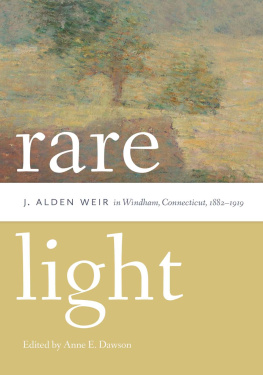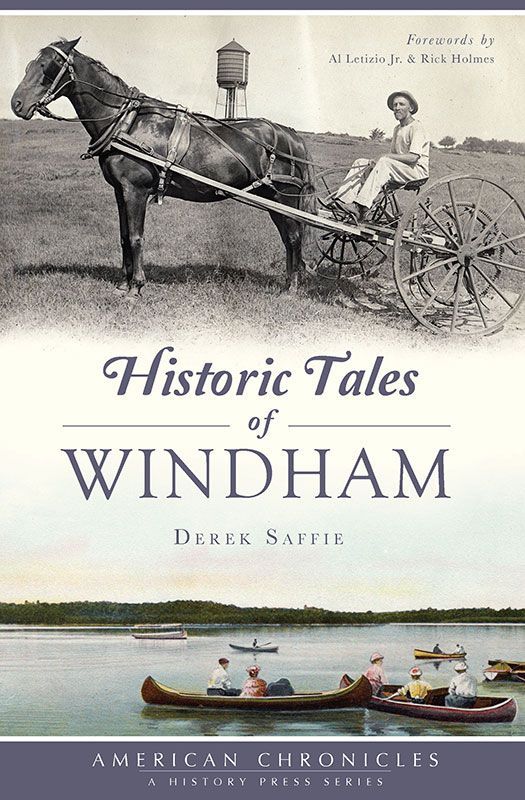

Published by The History Press
Charleston, SC
www.historypress.net
Copyright 2016 by Derek Saffie
All rights reserved
First published 2016
e-book edition 2016
ISBN 978.1.43965.647.1
Library of Congress Control Number: 2016930874
print edition ISBN 978.1.46713.564.1
Notice : The information in this book is true and complete to the best of our knowledge. It is offered without guarantee on the part of the author or The History Press. The author and The History Press disclaim all liability in connection with the use of this book.
All rights reserved. No part of this book may be reproduced or transmitted in any form whatsoever without prior written permission from the publisher except in the case of brief quotations embodied in critical articles and reviews.
To my great-grandfather Erich Obst, who returned home after serving in
World War I and discovered for himself the everlasting allure of Cobbetts Pond.
CONTENTS
FOREWORD
Weve been Windham for the better part of three hundred years. As of 2016, my family has been here for about forty of those years, so I am honored to have been asked by Derek Saffie to write the foreword for his Historic Tales of Windham .
In 1883, 164 years after its modern settlement, and 133 years ago, the first memorial of the past and present of Windham was penned by Leonard Allison Morrison, who opened his book with the words, To the People of Windham N.H., and to those who derive descent from the Scotch settlers there, beneath whatever skies their homes might be, this memorial of the past and present is dedicated with sentiments of high regard. Back in 1883, Morrison listed 250 families by name. Today, Windham is the home to more than 5,000 families.
Ninety-two years after Morrisons book in 1975, the Windham Historic Committee asked, What is Windham? and after three hours of deliberation, dubbed it a rural oasis, naming its newly published update of Windhams history by the same name. Rural Oasis is an important and well-written follow-up to Morrisons nineteenth-century work.
Many regard Windhams history as encompassing the last three hundred years of modern civilization. Recently, Derek Saffie and I visited Windhams historic Indian Rock, our oldest known archaeological artifact, dating back thousands of years. I was amazed at how Derek brought this artifact to life for me and others by telling stories of the past and how this spot was so significant in its time. How many of our young people know about this and other important parts of our towns history? I would bet that most dont. Derek takes people, places and events that lie silently nestled in our past and brings them to life through stories and chronicles of our past. Humanizing these people, places and events makes them real for todays Windham residents and, building on the foundation created in earlier works, creates a fascinating connection from our past to our future.
The blending of old New England values and traditions, the fingerprints left on our town by generations of the past in historic places, is a treasure to be celebrated. Its one of the things that makes Windham so special. The symbols on our town crestthe castle towers, the water, the treesall have meaning in our history and tell a story of who we are. My wife, Patti, and I were proud to commission in 2014 Windhams first flag, featuring our town crest prominently, and as of this writing, it is the only such flag in existence. We rely on storytellers to keep our history and those traditions preserved for the benefit of future generations.
Derek Saffie, a brilliant and thoughtful young mind of today, presents a fresh and modern interpretation of the history of our beloved home, Windham. He will now go down as the latest teller of our rich history, an embodiment of the spirit of Charles Knight, who, in 1883, said to Windhams future inhabitants: History has a great office, to make the past intelligent to the present, for the guidance of the future.
Al Letizio Jr.
Chairman
Windham Board of Selectmen 2016
FOREWORD
I feel sure that Sir Charles Wyndham (17101763), Earl of Egremont, Baron Cockermouth, Baronet of Orchard Wyndham and Lord Lieutenant of Cumberland and Sussex, would be very proud of how the town named after him has turned out. The Wyndham family motto was, in fact, their war cry, Au bon droit, which told the world they were fighting with good reason. Perhaps that would also be a good motto for the town of Windham. Since our earliest days, the citizens of Windham have sent their children, husbands, sons and daughters to fight in a dozen wars, beginning with the French and Indian War and the Revolutionary War in the eighteenth century and on through the Civil War, the two world wars, Korea, Vietnam and the current conflicts in the Middle East. With each war, we proudly answered our countrys call and fought with good reason.
The town that is now Windham was settled in 1719 by a pioneer band of sixteen families led by the Reverend James MacGregor from Aghadowey in Northern Ireland. The land they were granted was originally called Nutfield and now makes up the towns of Derry, Londonderry and Windham, as well as parts of Hudson, Manchester and Salem. In 1722, Nutfield was given a charter by the royal governor and renamed Londonderry. On February 23, 1742, the southeastern portion of Londonderry was incorporated as the town of Windham.
The original Scotch-Irish Windham pioneers left the restrictions of the Old World to seek freedom in the wilderness of the New World, leaving Northern Ireland because of long years of persecution. In his last sermon in Ireland, Pastor MacGregor said they were going to America to seek religious, cultural, political and economic freedom. They were willing to leave the certainties of their Irish hearths and homes for the uncertainty of a wilderness settlement where, at night, they would hear the howls of wolves and live in fear of Indian attacks. Still, they would give up all they knew in Ireland in the pursuit of freedom for themselves and their progeny. One of the first things they did upon arrival was build a church so they could worship their God in their own way, a school so their children could read their Bibles and improve their lives economically and a meetinghouse so they could assemble to elect their own leaders and vote on taxing themselves for the common weal. All these civil and religious privileges had been denied to them under the oppressive rule of the British government in Ireland.
For nearly three centuries, the citizens of this town have worked to make Windham into a community, a warm, welcoming place with good neighbors that has a vision for the future and an appreciation of the past. Windham has seen itself change from a tiny frontier outpost in the middle of an endless forest into a town with an agriculture-based economy where there were truly more cows than people, the land was crisscrossed by miles and miles of stone walls and nearly 90 percent of the land was treeless pastures and fields. By the start of the twentieth century, farming in Windham had nearly died out, and much of the cleared land had been reclaimed by brush and trees.
Windham remained a small rural town for most of its history with its population very stable. In 1940, the town was home to only 630 people, about the same population as it had in 1790. Things soon changed, however. In 1963, Interstate 93 cut through the town, and immediately our population numbers began to rise. The town quickly became a desirable place to move to for those living in the crowded urban areas of the Bay State. Here in Windham were good schools, clean air and little crime. Another of the towns drawing cards was that now, because of the new highway, Windham was an easy commute to employment in the cities of Massachusetts.








